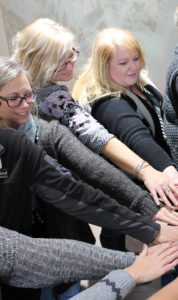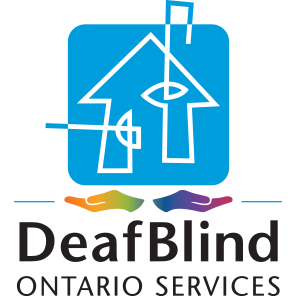Debunking misconceptions to break down barriers to inclusivity
“They can’t live independent lives.” According to Annette Piggott, Senior Client Services Advocate at DeafBlind Ontario Services, this is a common misconception about people with diverse abilities, like deafblindness.Deafblindness is a combination of hearing and vision loss. Over 1% of Canada’s population or approximately 466,420 people are deafblind, 211,250 live in Ontario.
When people think about deafblindness, they often think of Helen Keller, one of the most internationally recognized people with deafblindness. However, a person may be born with deafblindness or acquire deafblindness during their lifetime. This is an important distinction as sensory loss can impact concept development, communication, and mobility.
In her 15 years at DeafBlind Ontario Services, Annette has learned that independence is unique and attainable to each person and their individual needs.
“The word ‘independence’ is often put in a box,” says Annette. These myths and misconceptions stem from misinformation and stereotypes. Annette aims to debunk misconceptions and break down barriers to inclusivity.

“Independence looks different for everyone. For one person, this may mean more choices, more ways to communicate preferences, likes and dislikes, or goals. While for another, independence may be achieved with support in daily living, increasing the person’s quality of life,” says Annette.
For individuals with deafblindness, this support comes from intervenors. They help people with deafblindness to gain independence, build their life skills, and actively participate in all areas of their lives through an approach of ‘do with, not for’.
Communicating thoughts, feelings and ideas is a basic human need. Another common misconception about deafblindness is that the person cannot communicate… Often, this is because people are misinformed about how the person communicates.
Because every person with deafblindness experiences a varying degree of sensory loss, each person has their own unique and individual way to communicate. The intervenor may take a Total Communication Approach, using as many methods of communication as needed – like American Sign Language (ASL), fingerspelling, print on palm, tangible symbols, and technology with speech generative devices, to name a few – to facilitate the exchange of information.
“I’ve learned that there is always a way to teach new concepts and understand each person’s individual communication method(s). I let the person lead and take direction as their communication partner… they are the greatest teachers.”
“Being an intervenor teaches you skills that are applicable in all areas of your life. You learn how to collaborate with a team, brainstorm and think outside the box, be a communication partner, and advocate in many different scenarios. The result being empowerment for the resilient and determined people supported,” says Annette, who started her career as an intervenor.
“The intervenor helps the person with deafblindness be the best version of themselves and live their best life with increased independence. It’s a rewarding career with the opportunity to not only discover the potential of each person supported, but your own potential too.”
Learn more and apply today at www.deafblindontario.com/careers.



Recent Comments